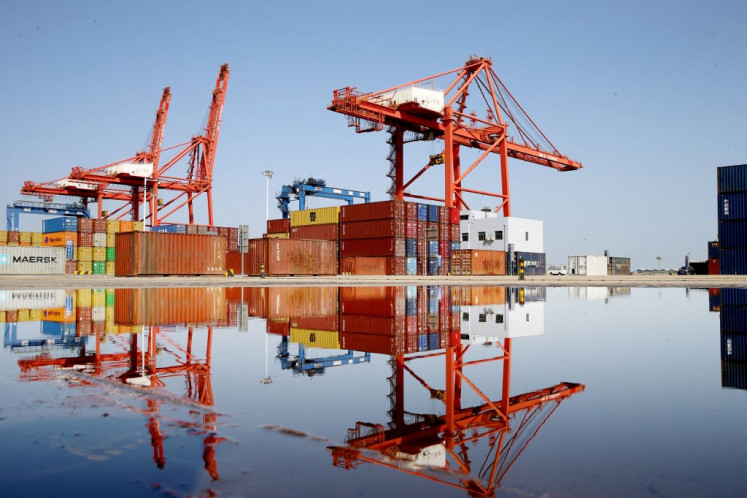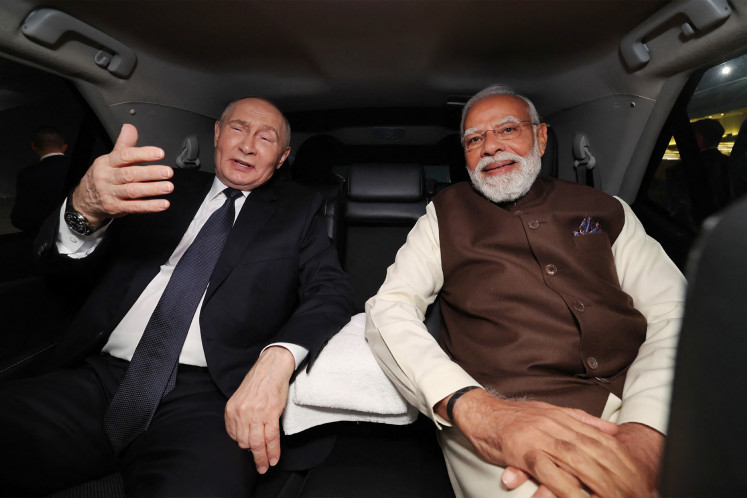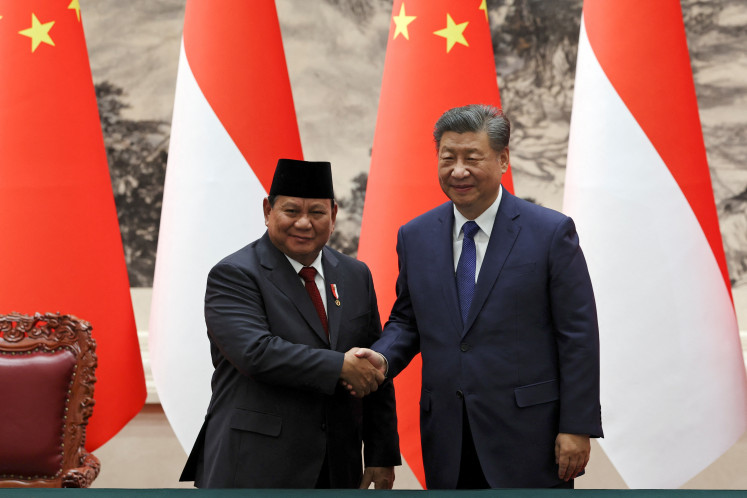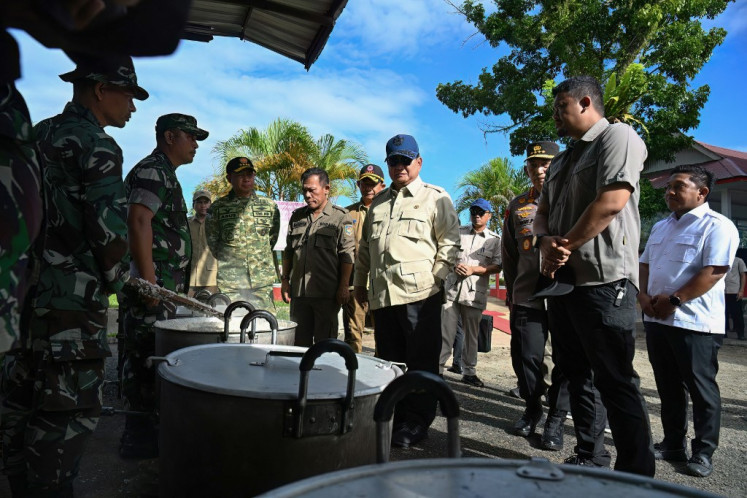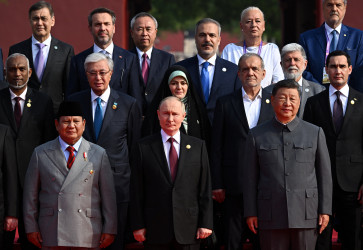Popular Reads
Top Results
Can't find what you're looking for?
View all search resultsPopular Reads
Top Results
Can't find what you're looking for?
View all search resultsChina’s military parade: Power, geopolitics and Indonesia’s strategic stakes
President Prabowo Subianto’s attendance at the parade in Beijing signals awareness that the world is shifting to a multipolar order, and that Indonesia is navigating its positioning amid uncertain currents.
Change text size
Gift Premium Articles
to Anyone
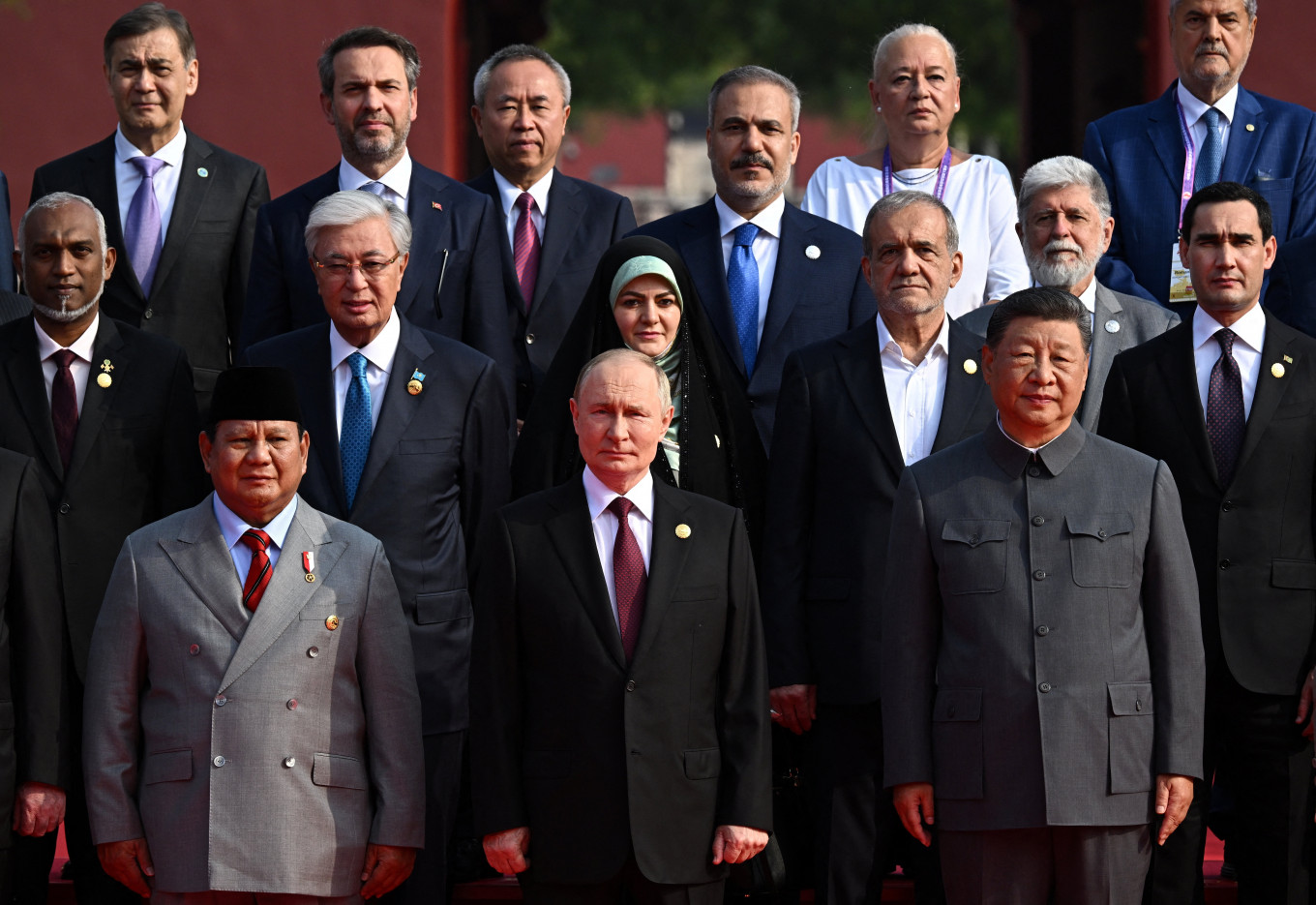 Chinese President Xi Jinping (right, front row) poses with the heads of foreign delegations, including President Prabowo Subianto (left, front) and Russian President Vladimir Putin (center, front), for a family photo on Sept. 3, 2025, prior to the 80th Victory Day parade in Beijing. (Reuters/Sputnik/Sergey Bobylev)
Chinese President Xi Jinping (right, front row) poses with the heads of foreign delegations, including President Prabowo Subianto (left, front) and Russian President Vladimir Putin (center, front), for a family photo on Sept. 3, 2025, prior to the 80th Victory Day parade in Beijing. (Reuters/Sputnik/Sergey Bobylev)
O
n Sept. 3, the world watched as China held its largest military parade to commemorate the 80th anniversary of Japan's surrender in World War II. It was a clear declaration of China's rising power.
With more than 12,000 troops marching in perfect formation, 500 units of heavy weaponry and nearly 200 combat aircraft soaring overhead, this year’s Victory Day Parade was the largest military display in modern Chinese history. On full display were the DF-27 hypersonic missile, believed capable of evading United States missile defenses, new stealth drones, as well as the Fujian aircraft carrier, Type-99A tanks and autonomous submarines.
The show of force signaled China's ability to project power globally. Meanwhile, the presence of Russian President Vladimir Putin and North Korean leader Kim Jong-un, two figures who represent defiance against Western power, underscored an emerging Eurasian axis intent on reshaping the global order.
For Indonesia, and for Southeast Asia in general, this event raises a crucial question: How should it respond to this shifting geopolitical landscape?
The military spectacle in Beijing is the culmination of more than two decades of strategic investment. Since the launch of the Belt and Road Initiative (BRI) in 2013, China has pursued a dual path: consolidating economic influence abroad while modernizing its armed forces at home.
Central to this transformation is the doctrine of military-civilian fusion, which channels civilian technological innovations into the defense sector. This approach allows China to leapfrog in areas such as artificial intelligence, hypersonic technology and satellite navigation at costs significantly lower than those facing Western defense industries.
The results are striking. The People's Liberation Army Navy (PLAN) is now the world's largest, and the launch of the Fujian aircraft carrier signals its intent to develop a blue water navy. Meanwhile, the BeiDou satellite navigation system, already used by more than 165 countries, challenges the US-controlled GPS network and represents Beijing’s ambition to create global infrastructure independent of Western dominance.





